Overview:
The article focuses on the ADA HbA1c guidelines and their critical role in effective diabetes management, emphasizing the importance of maintaining appropriate HbA1c levels to prevent complications. It supports this by detailing how personalized treatment plans, regular monitoring, and patient education can significantly enhance blood sugar control and overall health outcomes, particularly for those with comorbidities or varying risk factors.
Introduction
Navigating the complexities of diabetes management requires a thorough understanding of key metrics, with HbA1c levels standing out as a critical indicator of blood glucose control. This article delves into the significance of HbA1c, exploring its role in evaluating treatment effectiveness and guiding necessary adjustments in therapy.
With diabetes affecting a substantial portion of the adult population, the importance of regular monitoring and individualized care becomes increasingly evident. Readers will gain insights into:
- The American Diabetes Association's guidelines
- Factors influencing personalized HbA1c goals
- The potential risks associated with both high and low levels
Additionally, practical strategies for achieving optimal HbA1c targets will be presented, equipping patients with the tools needed for effective diabetes management.
Understanding HbA1c: The Cornerstone of Diabetes Management
Are you aware of how essential your blood sugar values are in managing your condition? Glycated hemoglobin, often called A1c, serves as a vital indicator of average blood glucose levels over the preceding two to three months. This measurement is expressed as a percentage, with elevated values denoting inadequate blood sugar control.
The significance of the ADA HbA1c guidelines in managing blood sugar levels cannot be overstated; they are integral to evaluating the effectiveness of treatment plans and guiding adjustments in therapy. At&T Solutions, we are dedicated to enhancing management of this condition through education, community support, and innovative resources for those impacted by Type 2 and Type 3. Recent studies indicate that patients with a Charlson Comorbidity Index (CCI) score of 0 demonstrated a higher regular testing rate of 38.0%, underscoring the importance of consistent monitoring.
Notably, the prevalence of this illness among U.S. adults stands at 14.3%, highlighting the widespread impact of this condition. Furthermore, concerning statistics reveal that among U.S. adults diagnosed with this condition:
- 39.2% also suffer from chronic kidney disease
- 15.7% experiencing moderate to severe stages
This correlation underscores the significant health dangers linked to the condition, thus requiring continuous observation of blood sugar metrics.
Furthermore, the occurrence of undetected blood sugar issues has risen from:
- 1.6% in adults within the underweight or normal weight group
- 2.8% in those classified as overweight
- 7.9% in adults with obesity
This highlights the significance of tracking glucose readings across different demographics. Comprehending the formation, measurement, and interpretation of glycated hemoglobin is essential for creating effective management strategies for blood sugar control according to ADA HbA1c guidelines. As the field of endocrinology evolves, continuous education on interpreting ADA HbA1c guidelines will remain crucial in optimizing individual outcomes.
Moreover, there is a pressing need for improved management policies for blood sugar conditions, particularly for elderly patients, those in rural areas, and low-income individuals who have low rates of basic testing. T2DSolutions is here to support you on this journey, providing valuable insights and community connections for effective health management. Don't forget to subscribe for updates on our latest resources and community support to help you manage your health effectively!
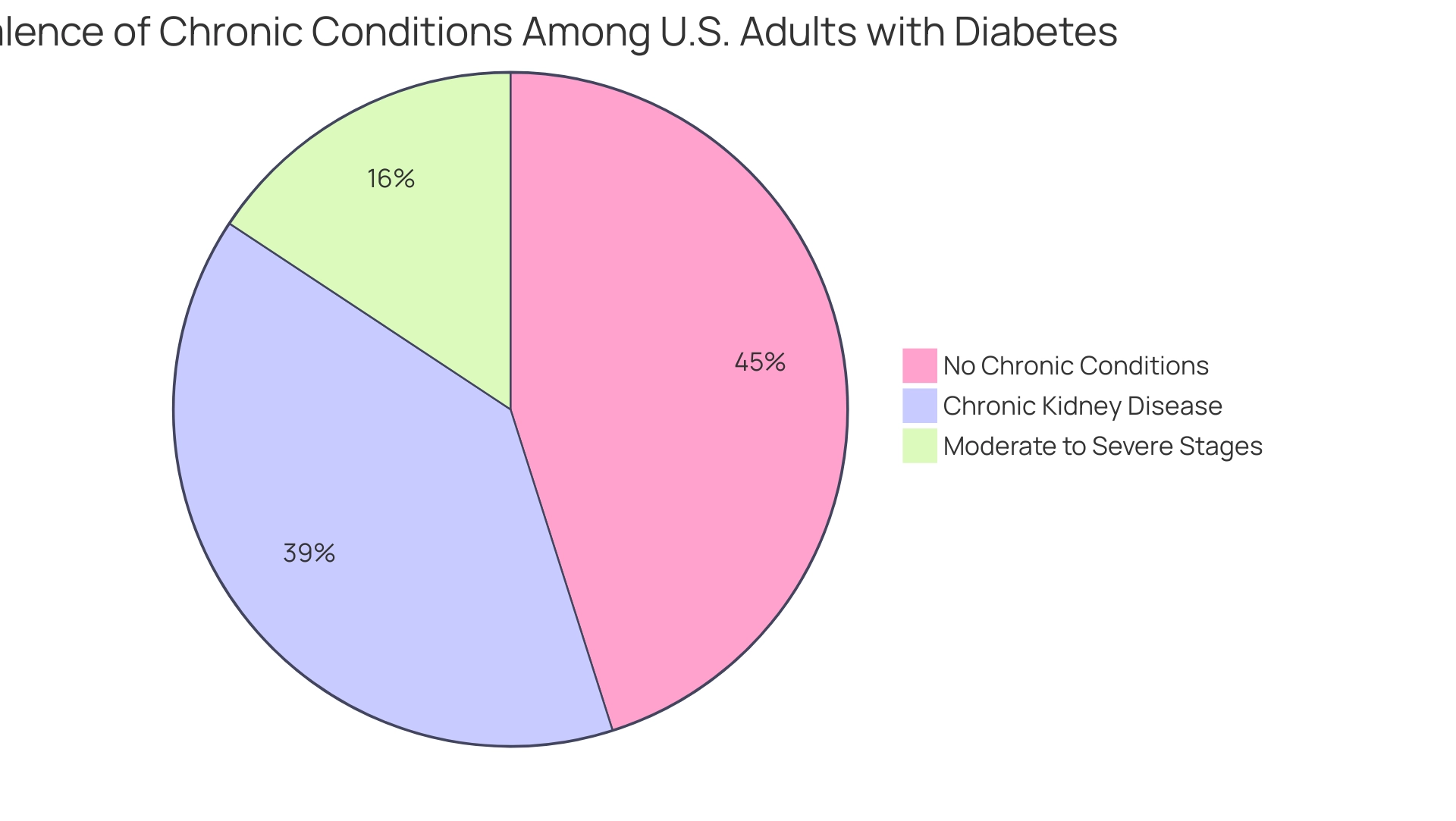
ADA HbA1c Guidelines: Key Targets for Effective Diabetes Control
td Solutions is proud to emerge as a comprehensive resource hub dedicated to Type 2 and Type 3 blood sugar regulation education and community support. As newly diagnosed individuals embark on their management journey, understanding the ADA HbA1c guidelines is essential. According to the ADA HbA1c guidelines, a general blood sugar target of less than 7% is established for most adults living with the condition; however, this standard must be tailored to consider various personal factors such as age, duration of the illness, comorbidities, and specific treatment objectives.
Personalizing HbA1c targets can significantly enhance outcomes, as highlighted by the ADA HbA1c guidelines advocating for individualized care models that address interconnected risk factors related to cardiovascular, kidney, and metabolic health. T2DSolutions will provide educational resources, including:
- Detailed guides on A1C management
- Tools for tracking health metrics
- A supportive community for sharing experiences and advice
Recent statistics show that while many individuals with the condition aim to meet these targets, continuous monitoring and annual evaluations of factors such as urinary albumin-to-creatinine ratio (UACR) and estimated glomerular filtration rate (eGFR) are crucial elements of effective care.
Furthermore, the economic burden of diabetes management is significant, with excess medical costs per person rising from $10,179 to $12,022 between 2012 and 2022, and total costs associated with diagnosed diabetes in the U.S. reaching an estimated $413 billion in 2022. T2DSolutions aims to provide the necessary tools and community support to help individuals navigate these challenges effectively.
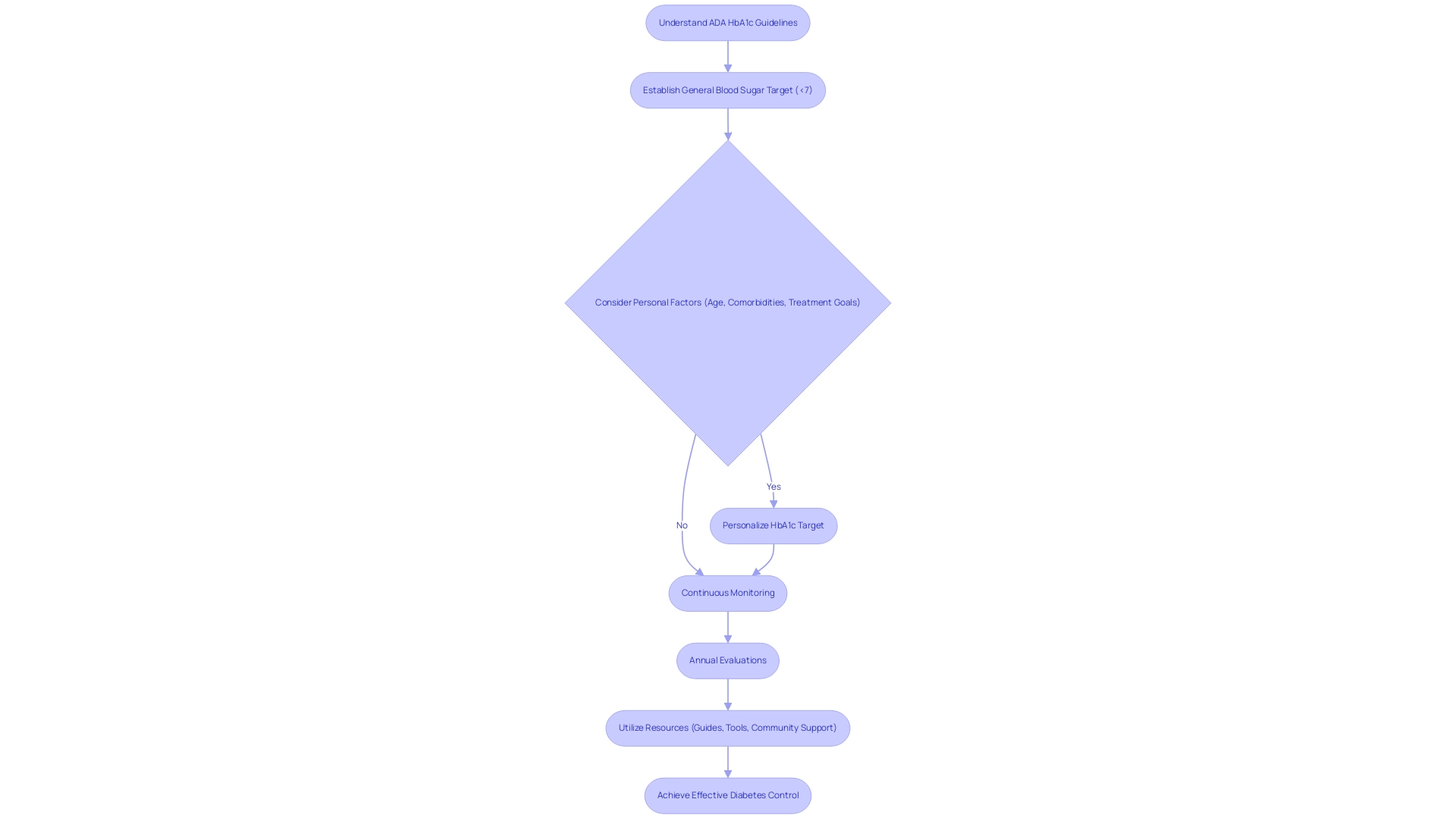
Individualizing HbA1c Goals: Factors to Consider for Optimal Care
When setting glycemic targets, it is essential to take into account the ADA HbA1c guidelines along with a range of factors, including:
- Age
- Comorbidities
- The possible risk of hypoglycemia
- Individual preferences
For older individuals or those with a limited life expectancy, a higher blood sugar level target may be more appropriate to reduce the risks linked to aggressive treatment protocols. On the other hand, younger individuals might aim for stricter management to reduce the risk of long-term complications linked to the condition.
Recent research highlights the significance of participating in shared decision-making with healthcare providers, as this collaborative method encourages the establishment of realistic and attainable blood sugar targets. A case study titled 'Relationships Between Glycated Hemoglobin Levels and Clinical Outcomes' emphasized that understanding of the condition is a crucial predictor of glycated hemoglobin levels, suggesting that improving education for individuals can result in better glycemic control. The study employed statistical analyses, including:
- Chi-square tests
- Multiple logistic regression
to identify factors affecting regular blood glucose testing and its relationship with health outcomes.
As mentioned in the research, adhering to the ADA HbA1c guidelines for regular testing can significantly enhance the health results of individuals with blood sugar issues. In conclusion, personalized treatment plans that consider age and comorbidities, along with informed participant involvement, are essential in achieving optimal health outcomes.
To assist newly diagnosed individuals in this journey, T2D Solutions is launching as a comprehensive resource hub for Type 2 and Type 3 diabetes education and community support. This platform will offer valuable information and resources, such as educational articles, webinars, and community support groups, to help patients in understanding and managing their blood sugar measurements effectively.
T2D Solutions will be fully operational shortly, and we encourage you to subscribe for updates to stay informed about new resources and support options available.
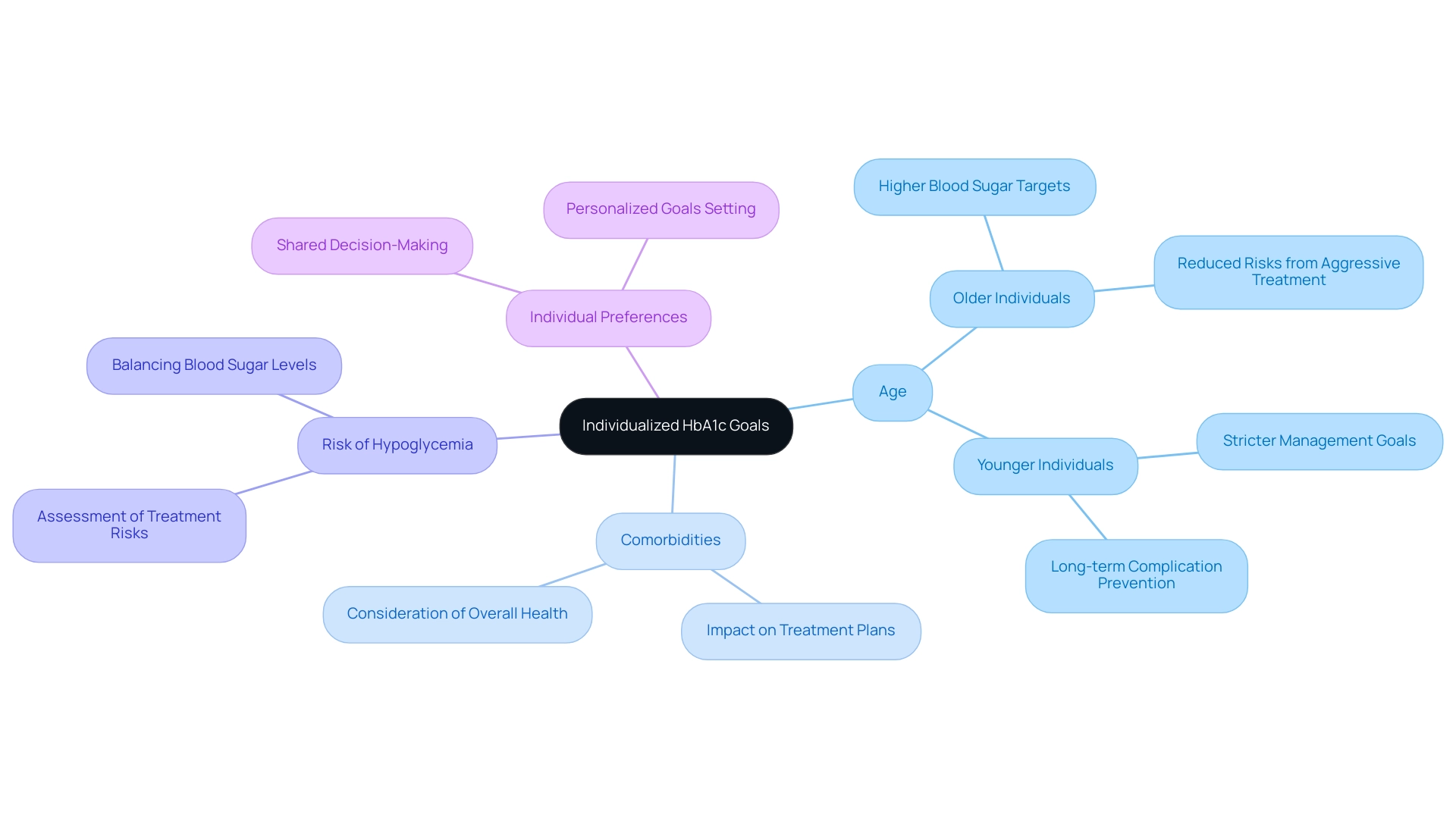
The Consequences of HbA1c Levels: Risks and Complications
At T2DSolutions, we acknowledge that maintaining an appropriate HbA1c value according to ADA HbA1c guidelines is crucial for preventing diabetes-related complications. Chronic high levels, defined as above 7%, are linked to severe health risks such as:
- Cardiovascular disease
- Neuropathy
- Nephropathy
- Retinopathy
These complications not only negatively impact quality of life but also add to the increasing economic burden of this condition, which reached an estimated $413 billion in the United States in 2022.
This figure reflects a significant increase in direct costs, underscoring the need for effective management strategies. Our platform aims to support newly diagnosed patients by offering thorough education on the significance of regular monitoring; recent studies indicate the average number of blood sugar tests conducted post-diagnosis was 6.6 ± 9.0. However, it is essential to recognize the limitations of relying on a single blood sugar measure and not using it as a criterion for diagnosing the condition, as this can lead to mismanagement of the issue.
On the other hand, very low blood glucose measurements, defined as below 6.5%, can result in hypoglycemia, presenting immediate and potentially hazardous outcomes. This duality of risk emphasizes the essential need for patients to comprehend their HbA1c values and actively participate in their management of the condition as outlined in the ADA HbA1c guidelines. T2DSolutions is committed to being your all-encompassing resource, providing educational materials and community support initiatives that empower you to manage your health journey.
As mentioned by Patricia Platt, an independent contractor for HealthMetrics, 'maintaining these levels is essential for reducing the risk of complications related to blood sugar issues.' By prioritizing blood sugar control and following treatment plans, individuals can reduce these risks and enhance their overall health outcomes. Additionally, the age-adjusted percentage of adults aware of their prediabetes increased from 6.5% in 2005-2008 to 17.4% in 2017-2020, indicating a growing recognition of the importance of diabetes management.
T2DSolutions is here to support you every step of the way as you navigate this journey.
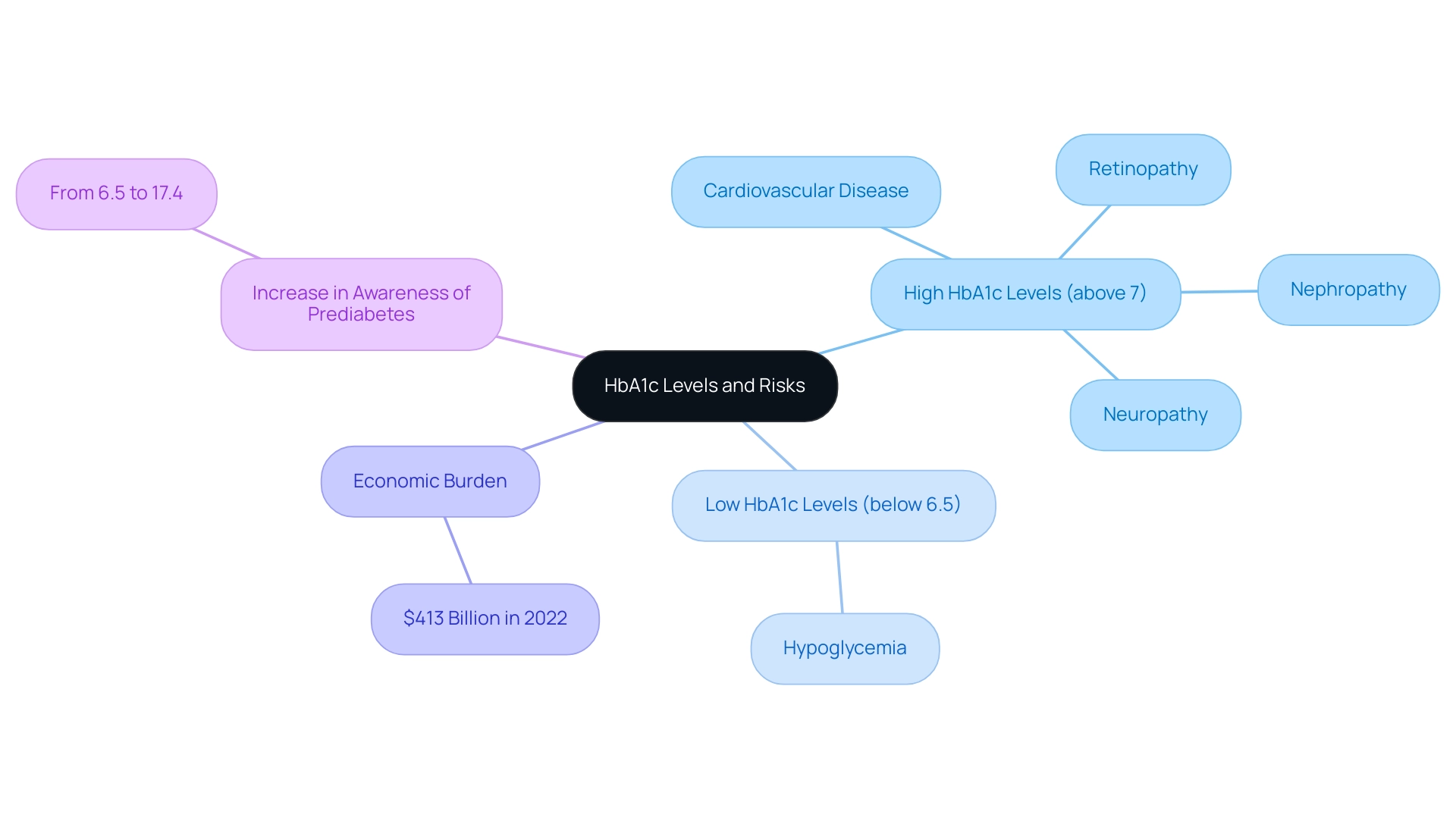
Strategies for Achieving Your HbA1c Goals: Practical Tips and Tools
at&t Solutions, we are dedicated to offering recently diagnosed individuals the essential resources to reach and sustain their blood sugar targets. Our platform offers a range of support options to help patients implement effective strategies:
- Dietary Modifications: Emphasizing a balanced diet that includes whole grains, lean proteins, fruits, and vegetables is essential.
Tracking carbohydrate consumption is essential, as research has demonstrated that customized dietary modifications greatly influence blood sugar metrics. T2DSolutions provides access to meal planning resources and dietary workshops to assist with these modifications.
- Regular Physical Activity: Engaging in at least 150 minutes of moderate exercise per week is recommended. This degree of physical activity has been associated with enhanced insulin sensitivity, leading to a decrease in blood glucose levels. For instance, a structured training program has been linked to a notable 0.59% reduction in blood glucose levels, as stated by Dr. Deepak N. Parchwani, the corresponding author of a relevant study.
Additionally, a recommendation to increase physical activity showed a 0.14% reduction in blood sugar levels, highlighting the benefits of lifestyle changes. T2DSolutions provides exercise programs and community support to keep individuals motivated.
-
Monitoring Blood Glucose: Regular blood glucose checks enable patients to comprehend the impact of their lifestyle choices on their blood sugar readings, facilitating informed decision-making. Our platform offers tools for monitoring blood glucose readings and personalized feedback.
-
Medication Adherence: Consistently following prescribed medication regimens is crucial for effective blood glucose control. Non-adherence can lead to significant fluctuations in HbA1c levels as highlighted by ada hba1c guidelines. T2DSolutions features reminders and educational resources to support medication adherence.
-
Education and Support: Involvement in health education programs improves self-management abilities by offering valuable information and support networks. T2DSolutions aspires to be a thorough resource center, providing access to numerous education programs that can function as essential tools for individuals managing their health strategies.
Furthermore, a case study titled 'Impact of Exercise on Cardiovascular Risk Factors in T2DM' illustrates how structured exercise training improved glycemic control, although changes in other cardiovascular risk factors were not statistically significant. It is also important to note some limitations of the study, including potential non-representativeness of the sample and the lack of consideration for the effects of various medications on glucose metabolism. By diligently implementing these approaches alongside the support from T2D Solutions, including testimonials from patients who have successfully managed their diabetes with our resources, patients can make substantial progress toward achieving the ada hba1c guidelines.
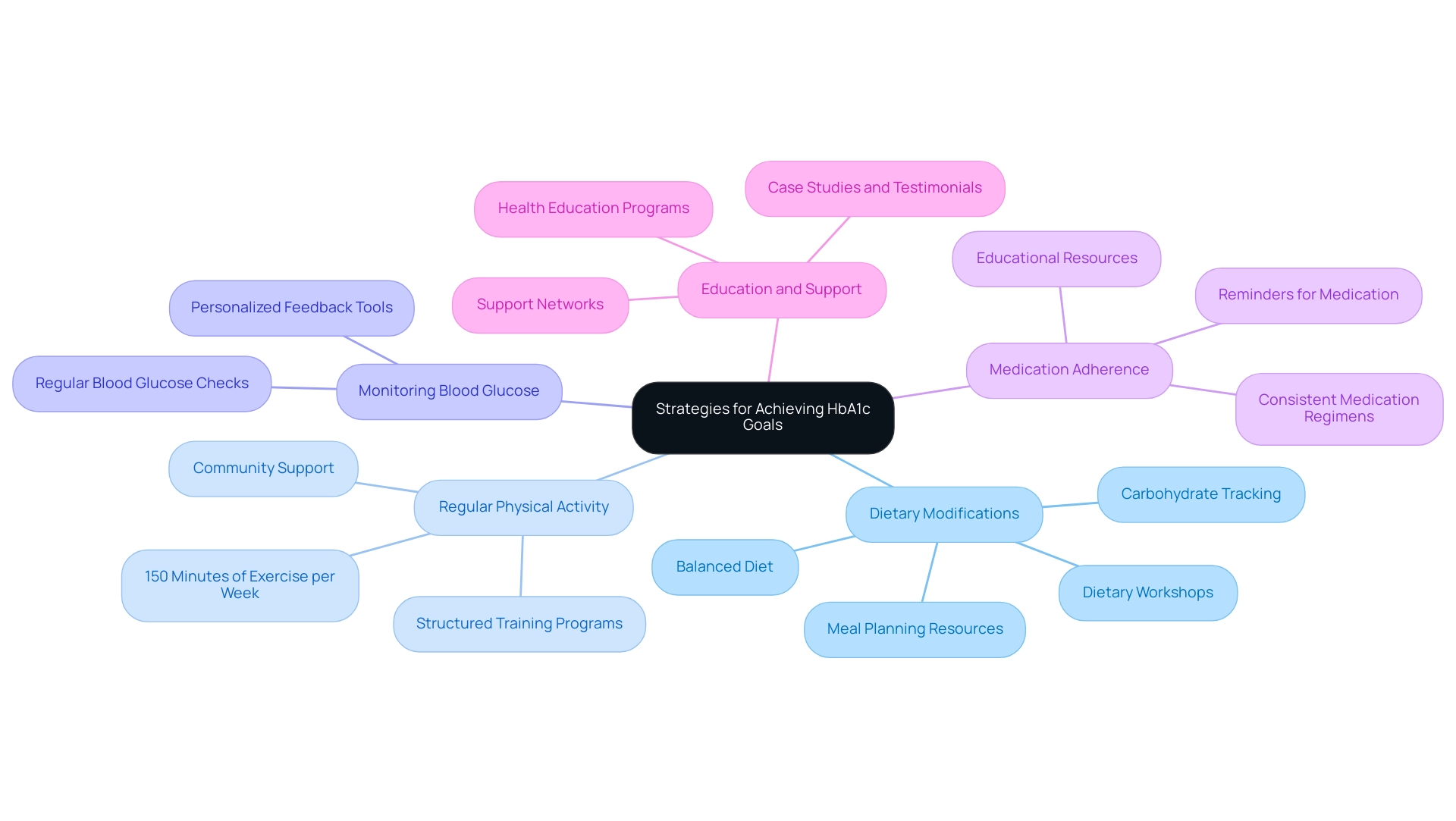
Conclusion
Understanding and managing HbA1c levels is paramount for anyone living with diabetes. Throughout this article, the critical role of HbA1c as an indicator of long-term blood glucose control has been emphasized, alongside the necessity of regular monitoring to prevent serious complications. The American Diabetes Association's guidelines provide a framework for setting personalized HbA1c targets that consider individual health factors, reinforcing the importance of tailored approaches in diabetes care.
The article has also highlighted the potential risks associated with both high and low HbA1c levels, underlining the delicate balance required in diabetes management. Strategies for achieving optimal HbA1c levels, such as:
- Dietary modifications
- Increased physical activity
- Adherence to medication
have been presented as practical tools for individuals navigating their diabetes journey.
In conclusion, effective diabetes management hinges on a comprehensive understanding of HbA1c and its implications. By prioritizing education, regular monitoring, and individualized care, patients can significantly improve their health outcomes and reduce the risk of complications. T2DSolutions stands ready to support this endeavor, offering essential resources and community connections to empower patients in managing their diabetes effectively.



